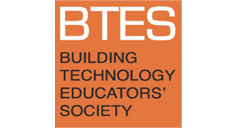‘Partners in Light:’ How Plastics Enabled Fluorescent Lighting and the Modern Office.”
Abstract
Writing in 1946, Charles Breskin, the editor of Modern Plastics, suggested that designers were emerging from the “dark ages” of commercial lighting. While construction in America had lagged during the Depression and World War, scientific advances in many areas of building technology had surged, and new demand for residential and commercial space was matched by the desire for more efficient, comfortable, and mechanized buildings. While advances in building cladding and servicing have been well-covered, one key development—matching chemical developments in plastics with electrical and illuminatory advances in fluorescent lighting—had equally revolutionary impacts on building interiors.
Fluorescent lighting as a technology dated to the late 19th century, but it only saw commercial development with the expiration of incandescent patents in the 1930s. Keen to develop a new market for a product that they could still claim as exclusive, General Electric pushed early fluorescent systems to market by 1934. These lamps offered cool, energy efficient light that was ideal for factories, but they also saw early use in office buildings. Among their benefits was the ease they offered in controlling and directing their light. While incandescent lamps ran hot, requiring heat- and ignition- proof housings of metal, fluorescents could be paired with diffusers, reflectors, and housings made of more easily molded plastic. Underwriters Laboratories approved the first polystyrene holders for fluorescents in 1945, which allowed lighting designers wide latitude in the way fluorescent light could be focused, reflected, directed, and shaded. The first systems to provide truly even light distribution over wide floor and desk areas followed. Along with the ubiquitous sealed curtain wall and perimeter air conditioning units, office buildings of the 1950s quickly took advantage of fluorescents’ easy pairing with scientifically designed housings that enabled regular, gridded ceiling layouts—a key influence in the development of the open plan, modular office.
Keywords: Lighting, Fluorescent Lights, Office Planning, Human Comfort, Plastics
How to Cite:
Leslie, T. W., (2019) “‘Partners in Light:’ How Plastics Enabled Fluorescent Lighting and the Modern Office.””, Building Technology Educators’ Society 2019(1). doi: https://doi.org/10.7275/b4dm-5081
Downloads:
Download PDF
403 Views
255 Downloads
